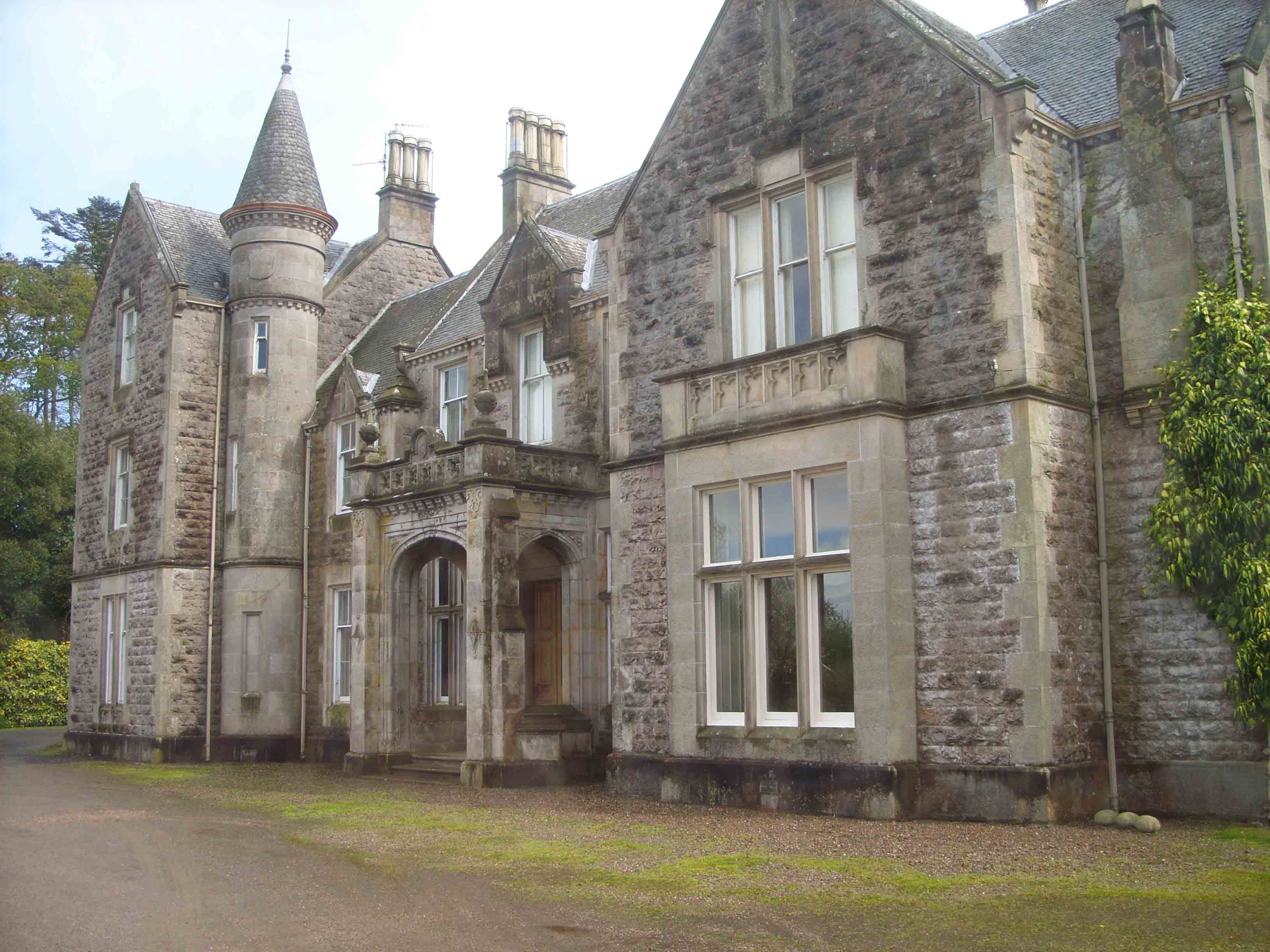
Gilford Castle was one of three houses built by the partners in the linen firm of Dunbar McMaster. Benjamin Dickson has bought the estate about 1855 and he erected the present castle in the Scottish baronial style. Later it was bought by the Wright family who still live there.
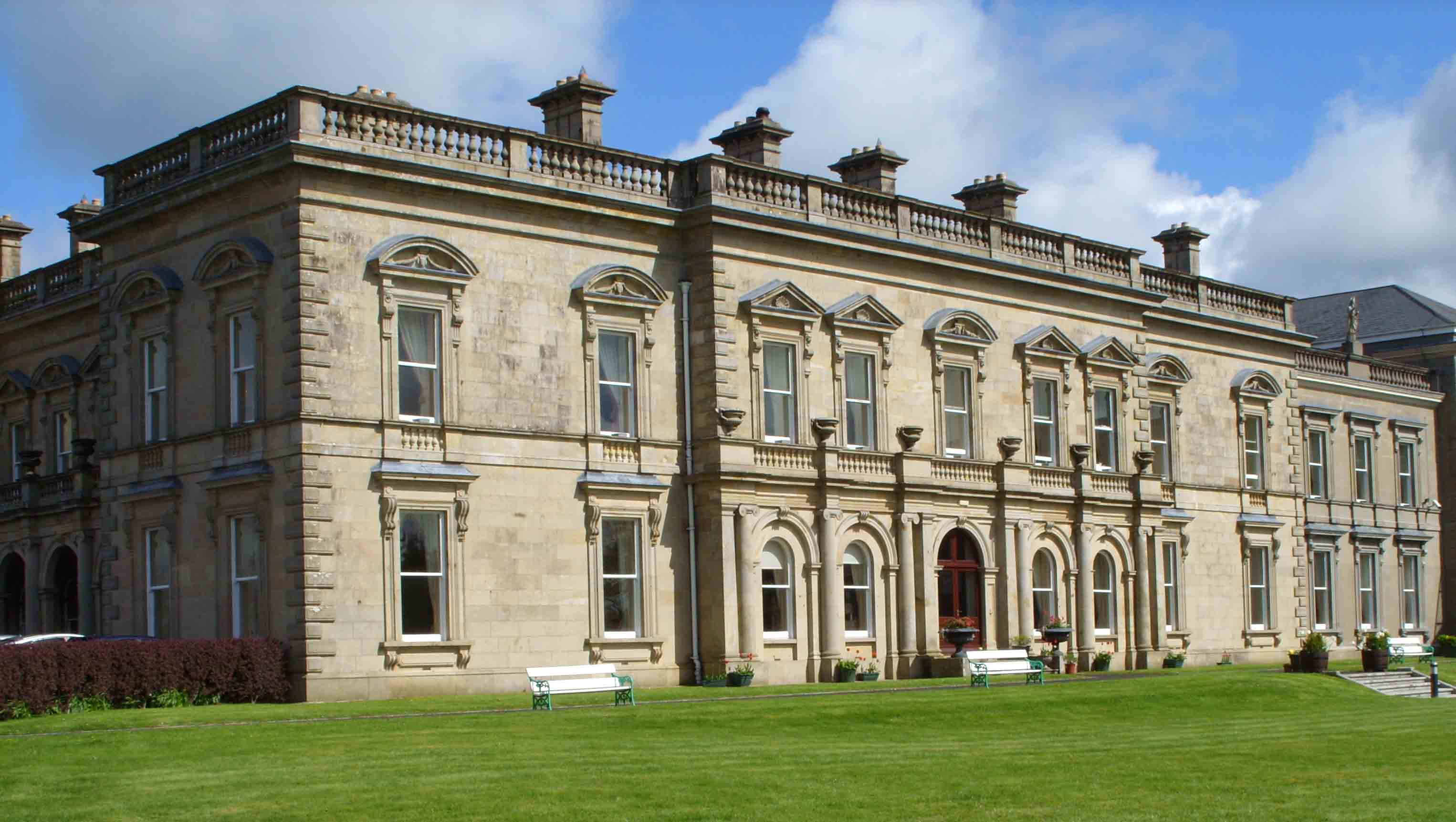
Drumantine House now belongs to the Society of African Missions and is used as a conference centre. The old manor house was bought by the Innes family in 1737 and this was replaced by a new Georgian style house which was completed in 1810. The house was remodelled in Italian Renaissance style in the mid-nineteenth century. The family left the house after World War I. The Estate was bought in 1922 by a local man who only wanted the land and he sold the house in 1926 to the Society of African Missions.
Prehen House, Londonderry
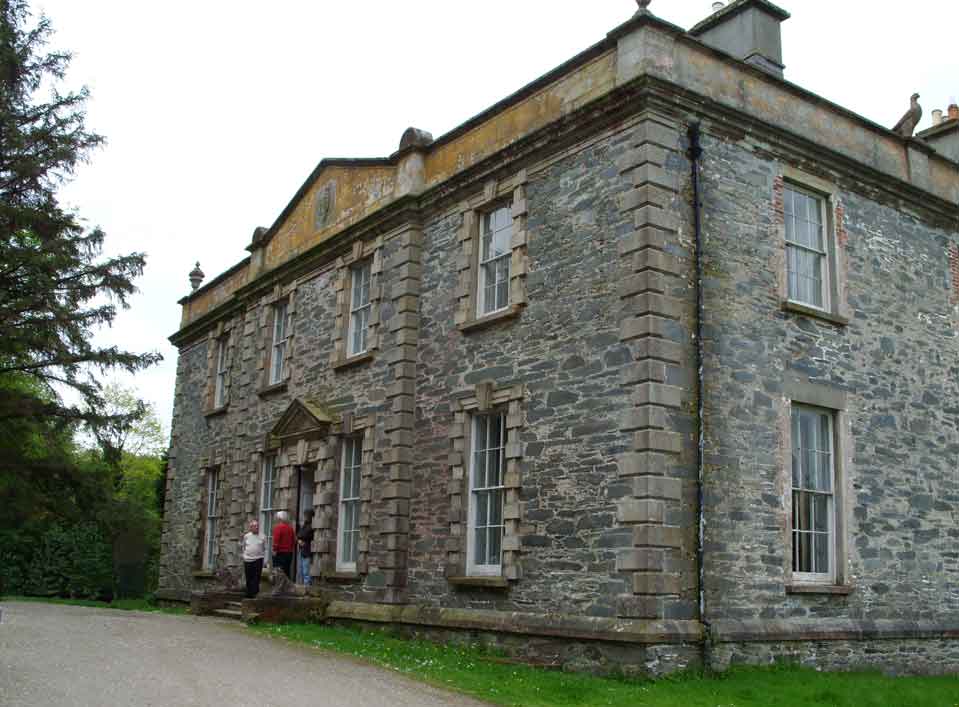
Prehen House is a privately owned 18th century Irish Georgian house on the outskirts of the city of Derry. It is thought to have been designed by local architect Michael Priestley and it was built c1740 for Andrew Knox, MP for Donegal, after he married Prehen heiress Honoria Tomkins some two years earlier. Andrew Knox's family owned the house for 170 years. After being seized by the Government after the 1914-18 war, Prehen House was brought back into another branch of the Knox family. Prehen is a Grade A listed building.
Castle Upton (Templepatrick)
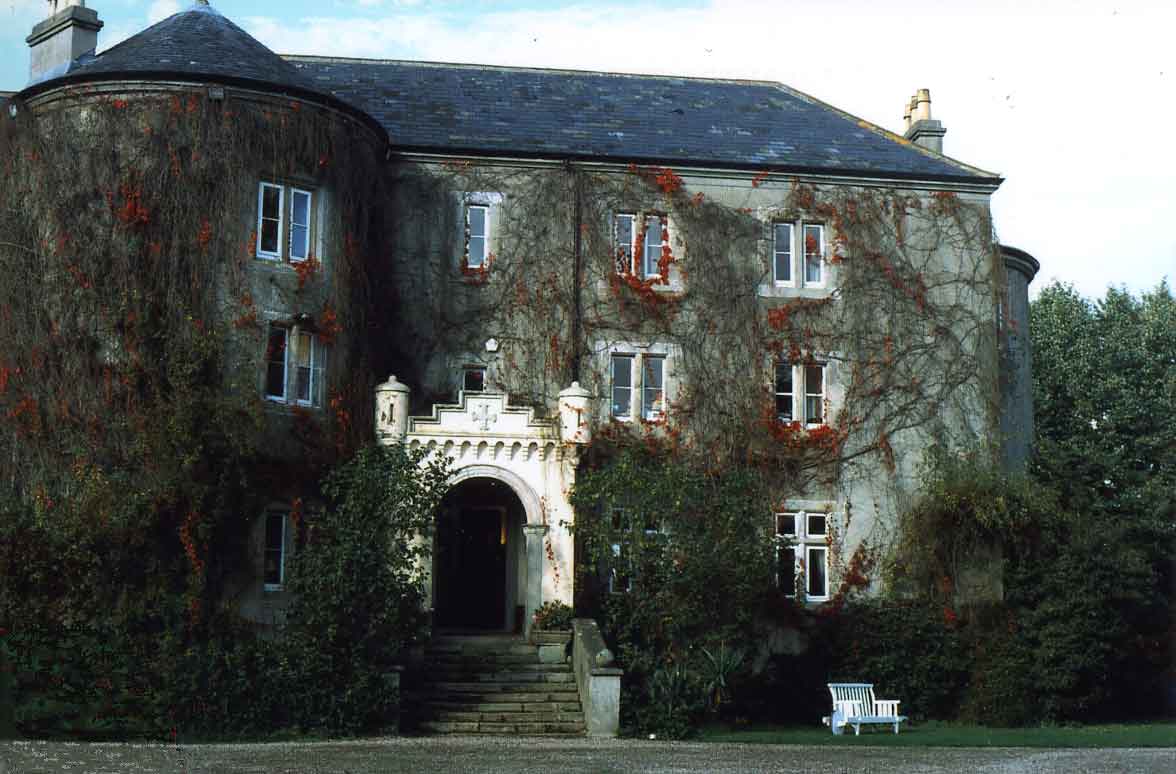
Castle Upton : On 21st October 2006 members of Bangor Historical Society visited Castle Upton and were shown around by the owner - Mr Danny Kinahan. Templepatrick is at the point where ancient routes crossed - from Larne and Carrickfergus to Antrim, and from Connor to Shankill (now part of Belfast). According to tradition a stone church (Teampull) associated with a visit from Saint Patrick was built in the village.
In 1182 this ancient church became the property of the Knights of St John or Knights Hospitallers. They built a castle part of which is still incorporated in the modern Castle Upton.
The Knights of St John were driven out in 1568, after the Reformation, and some years later Sir Arthur Chichester gave the property to Captain Humfred de Norton who built much of the present Castle. Captain Henry Upton bought the house and lands in 1625 and renamed it Castle Upton.
The property remained in the hands of the Upton family until World War I. It was then rented to Sir John Campbell and in 1923 was sold to a timber merchant who felled about 20,000 oak trees. The next owner was a farmer called Mr Smith. He made several changes to the building including the lowering, by one storey, of the south front. He kept pigs in the courtyards.
The main building has been altered several times. About 1770 the Uptons employed Robert Adam to carry out improvements. Adam also designed the beautiful double stable yard.
Sir Robin and Lady Kinahan bought the property in 1963 and then worked vigorously to restore it. Their son Danny is continuing this good work. It is now a comfortable family home and there are five other housing units in the courtyard.
Rosemount, Greyabbey. (2005)

Rosemount near Greyabbey is the home of Mr Bill Montgomery and his wife and family. His ancestor, Sir Roger de Montgomeri, came from Normandy to Britain with his cousin William the Conqueror in 1066.
He was given land in the Welsh Marches. The County and town of Montgomery bear his name. The family later moved to Scotland and many of the Irish Montgomerys are descendants of the Scottish settlers.
Hugh was the son of the Laird of Braidstane. He became a teacher and an agent in Dublin for James VI of Scotland. He planned Con O'Neill's escape from Carrickfergus Gaol and secured Con's pardon. His reward was to be half of Con's land but another Scottish supporter of James - James Hamilton - intervened so the land was divided between the three of them. Montgomery founded Newtownards, restored the Priory and built the Market Cross. He established the sea route between Donaghadee and Portpatrick in Scotland.
Montgomery became a Member of Parliament (MP) and was made Viscount Montgomery of the Great Ardes. His second son, James, settled at Rosemount in 1629 and built the first house there. It was burned by native Irish in 1648.
A new house was started immediately. Some stones from the ruined Abbey were used in its construction. It was burned accidentally in 1758 and the third, and present, house was started soon afterwards. Since then it has been altered in several ways. The entrance hall was changed when the driveway was relocated. In the 1840s a Hugh Montgomery married a Miss Herbert from the Welsh Marches. She had the roof raised to allow the addition of extra bedrooms for her eight children. The dining room was altered in the 1820s by the architect Vitruvius Morrison. A century later the intellectual wife of General William Montgomery added a small block at the back for a bathroom to enable the men to change after hunting.
The rooms at the back have a good view over the ha-ha to the ruins of the Abbey.
Sentry Hill, Glengormley, Newtownabbey. (2005)
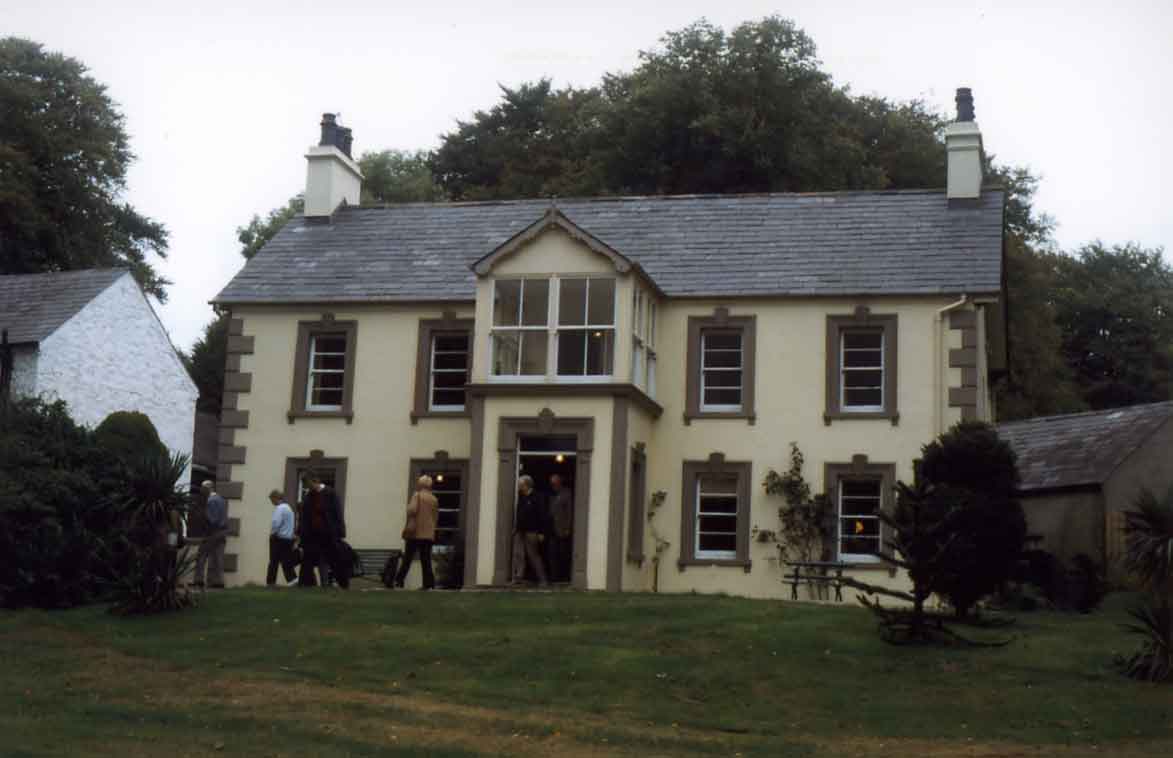
Sentry Hill is an early 19th century farmhouse on the hill above Glengormley and Corr's Corner in Newtownabbey, Co Antrim. It was the home of William Fee McKinney - a prosperous farmer and meticulous collector of farming, church and other records and artefacts. He was a member of the Linen Hall Library, the Belfast Natural History and Philosophical Society. He was secretary of Carnmoney Presbyterian Church for 62 years.
His ancestors came from the Highlands of Scotland in 1716. The family built the present house in 1833. The site had been a look out post in the time of William III.
William McKinney married Eliza McGaw in 1861. Although Eliza died in her forties, the McKinney's had a family of eight children. Three went to Australia. Janet married Dr Isaac Dundee. Meg remained single and lived at Sentry Hill until 1964 when she died at the age of 96. John and his wife, who died young, had a daughter Elsie and a son Tom. Elsie married Dr Joe Dundee.
Tom went to Royal Belfast Academical Institution (RBAI) and then to the Agricultural College at Ballyhaise in County Cavan. In 1912 he returned to Sentry Hill and started to introduce new farming methods.
Soon after the outbreak of World War I, Tom joined the Army and went to train at Epsom. He served with the 20th Battalion Royal Fusiliers. He was hit by shrapnel on 3rd July 1916 at the Battle of the Somme and died on 19th July. His grandfather, William F, died in 1917 and his father, John, in 1934. Elsie inherited the property and signed it over to Doctor Joe in 1941. He moved in to it in 1977 after retiring from his medical practice.
William F wrote his diaries and other records in the small morning room. The scullery, adjoining the kitchen, still has a high quality 'jaw box' sink and a hand pump for the water supply. The McKinney family did a lot of entertaining around the big table in the dining room. The house contains many family photographs and small paintings including some of Dr Joe's horses which won many races at Lisnalinchy and other 'point to point' meetings.
Mr McKinney took about 1000 photographs with his big plate camera. There were also rock samples, fossils and arrow heads.
Newtownabbey Borough Council now owns the house and about 23 acres of land.
Cootehill and Bellamont House (May 2007)
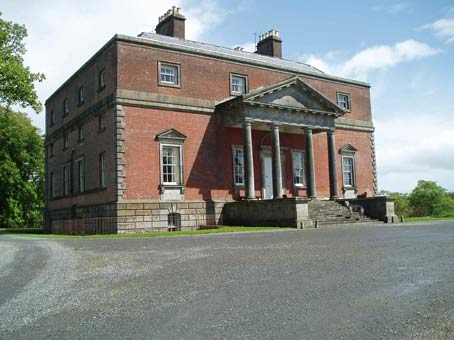
Bellamont :The town of Cootehill was built during the great Georgian era of urban development, and it derives its name from the marriage of Thomas Coote, a colonel in the Cromwellian forces, and Frances Hill from Hillsborough, Co.Down.
In 1725 Thomas Coote's nephew, also named Thomas, obtained a charter for holding markets and fairs in the town and in the same year work began on the building of his new mansion, Bellamont House. Designed by Lovett-Pearce, it was, and still is, regarded to be one of the finest examples of Palladian architecture in Ireland.
The present owner, Mr John Coote, was born and raised on his father’s sheep farm in Australia. His great-grandfather, who had lived on a farm just 10 miles from the Cootehill estate, immigrated to Australia in 1904. The first that John Coote knew of Bellamont House was in 1962, when he read an article in Country Life. In 1987, during a weekend in Ireland, he discovered that the house was for sale, and, of course, he snapped it up.
Much of the 1000-acre estate has been restored to its original layout and the house, after much restoration, now reflects the grandeur and tranquillity of the 1700’s.